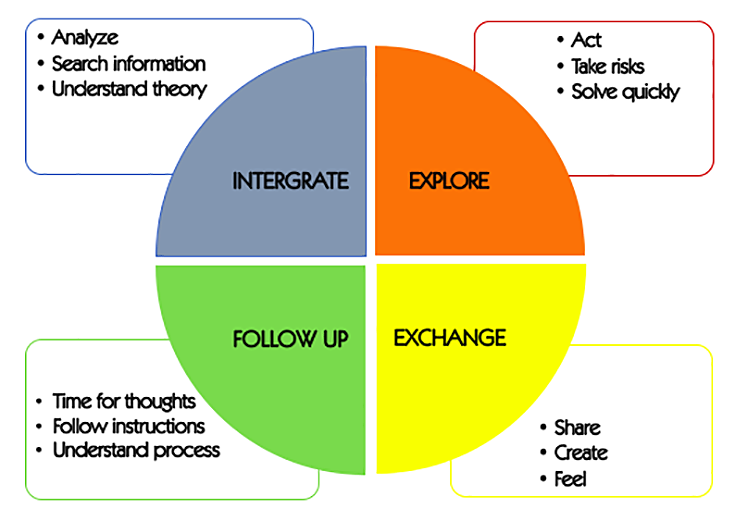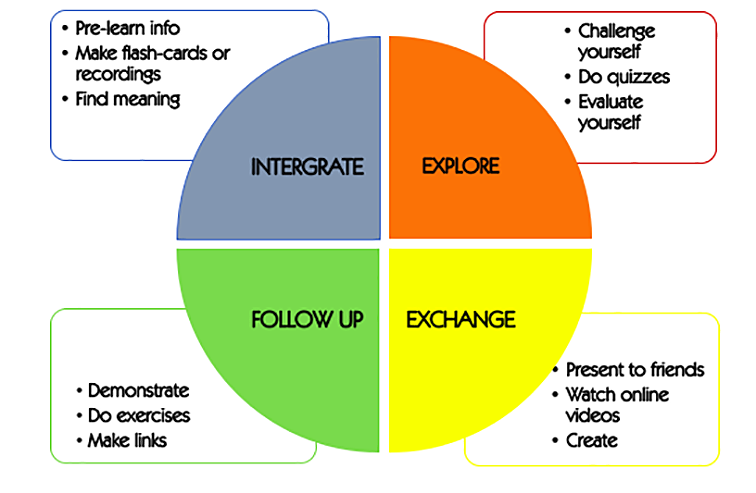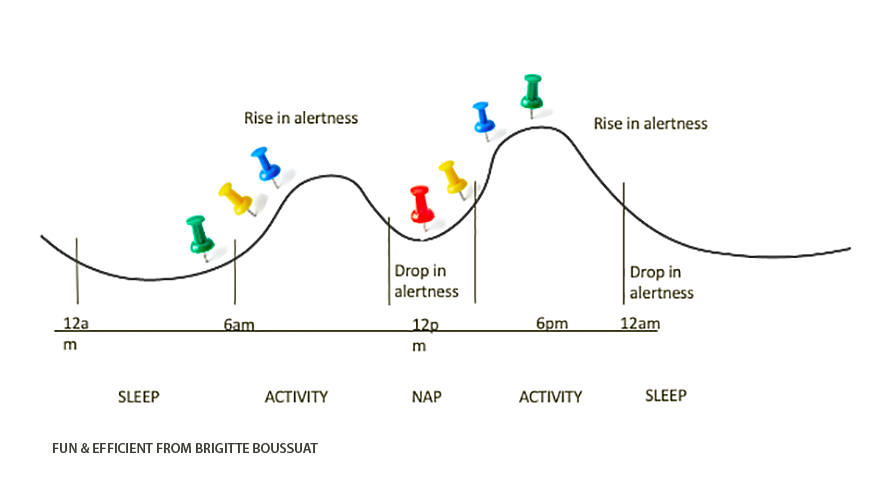SPOTLIGHT ON: Guiding a Committed Learning at Home
We live in a changing world where the entire education system is constantly challenged by new forms of knowledge. Parents have to adapt to these new forms and it is therefore important that they “partner” with teachers to guide their children in the best possible way.
One of the first steps is to be attentive to and aware of one’s own way of learning in order to support your child’s autonomy. Indeed, neuroscience teaches us that each brain is unique and malleable. Your child is unique; he does not learn like you do. Also, the neuroplasticity of the brain – identified as early as 1967 by Paul-Bach-y-Rita – has been widely explored since the 1990s and shows us that the brain can be flexible at any age and in any circumstance. Based on the work of C.G. Jung and inspired by the 4Colors® method from Brigitte Boussuat, a 4-colour compass could help you identify the different needs of your children.
Which colour do you go to most easily? Do you like to analyse? Do you like to act fast? Observe? Share? What is your child’s dominant colour at the moment, in this context?
By identifying your learning preference at a given moment and then that of your child, you will benefit from the first key that will allow you to guide your child towards committed learning.
The second step is to put children at the centre of their learning: when they are aware of their own learning preference and feel supported in a reflective and agile way, they are encouraged to be adaptable as well. Sharing a conscious and flexible common “language” to connect with them and engage with them in the realisation of their potential is an important lever. Available evidence suggests that the use of ‘learning to learn’ strategies can be worth the equivalent of an additional +7 months of progress when used well.
Some possible avenues:
– Help them to study at home with short, colour-coded, rhythmic times.
For Jean Houssaye, professor of education sciences at the University of Rouen and head of the CIVIIC laboratory, there is no teaching method per se that suits all learners. For this reason, it is important to alternate the colours in order to propose alternative learning methods.
– Introduce the colours to your children: The colours will be explicitly shared in order to make them aware of their own learning style.
– Take into account your child’s chronobiology and phases of alertness during the day. Organise study time according to your child’s biological needs. Alternating colours can be used to set the body and mind in motion: for example, yellow capsules made of exchanges and games or red ones, such as “educational walks”, challenges or commitments.
– Communicate with your child to identify and build on his or her strengths.
– Adopt a growth posture: discuss their failures constructively, see effort as a key to success, persevere and meet challenges, while having their emotional concerns expressed.
Psychologist Carol Dweck defines motivation as “the love of learning, the love of challenge”. And according to her, motivation is often more important than the initial capacity that determines success. By motivating your child to study through clear projection and an independent work ethic, your child’s motivation will be encouraged.
Thus, creating an engaging partnership at home will benefit your child’s motivation. Today, it is imperative to connect with the new generation that learns by combining fun, knowledge and technology. All children are curious and have untapped and unlimited potential, so let’s show them the way…
Article by: Sophie Debout of Mindgility. Sophie is also a Passage coordinator and contributer to this website.
Last update: Monday, 16th November, 2020



